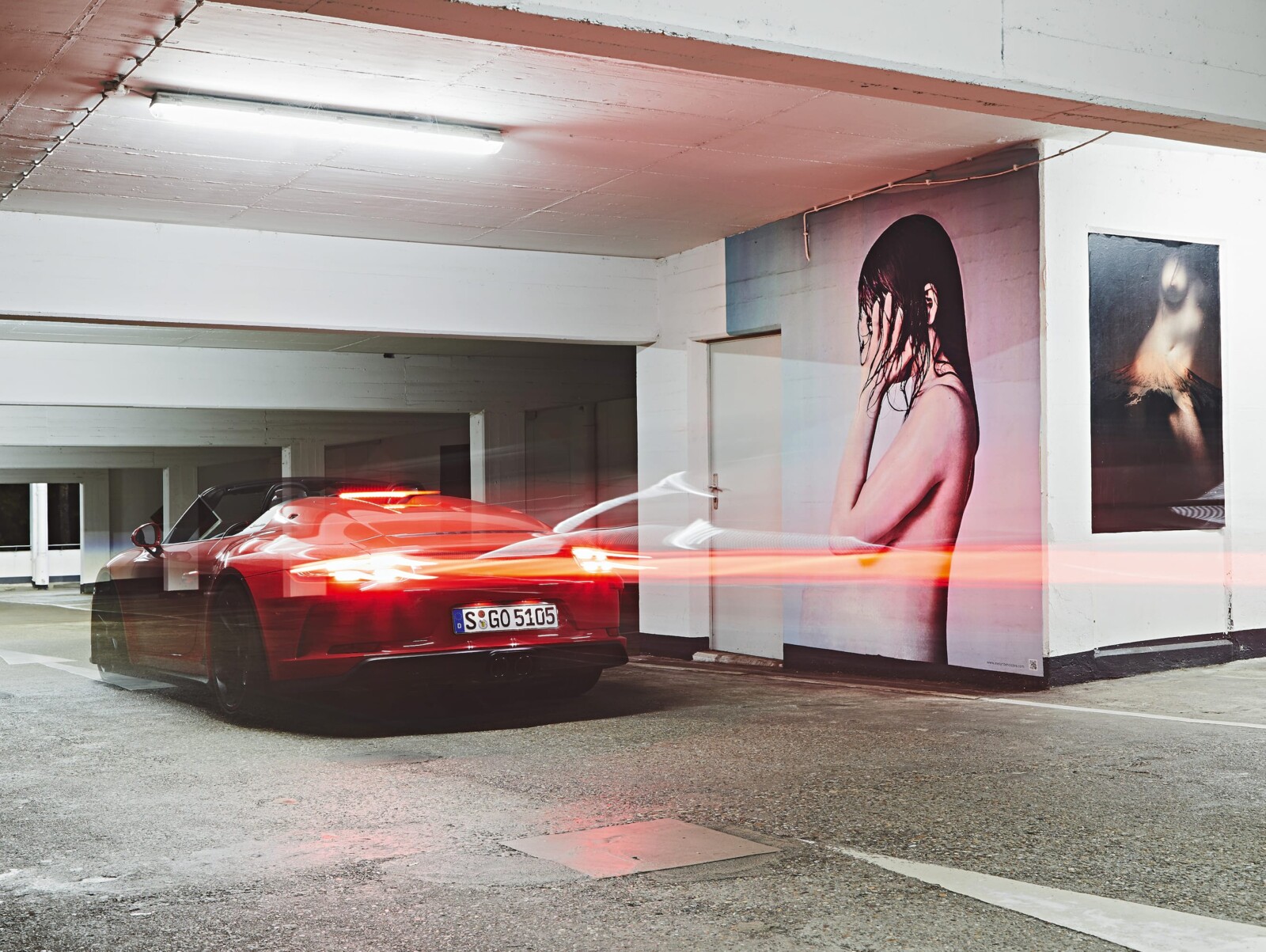Fortunately, it’s not very busy here on a Sunday evening in October. I can take my time and explore this unusual gallery. While I’m driving through the empty parking levels, I realize that I’m driving the perfect car for enjoying a drive-through art museum. The top is open, even though it’s autumn. That’s because someone who drives a Speedster couldn’t care less about banal matters such as the seasons. Dry, or not dry, that is the question. And the answer is not as straightforward as it may seem. For example, you only have to drive fast enough so the raindrops can’t hit you anymore.
Luckily, I’m safe under the roof of the car park and don’t have to resort to such extreme measures. The open top is only an advantage here, affording me a completely unencumbered field of vision. It’s almost like riding a motorbike, except that this car saves you the hassle of having to put your foot down every time you stop for a second. And there’s another reason why the car is so perfectly suited to this place: in a sense, it’s a work of art in its own right.
The Speedster has the characteristic double-bubble streamliners on the top lid, deviating from the iconic shape of the 911, and a GT3 RS engine that delivers enormous power – and the appropriate sound to go with it, of course. A monotonous, metallic melody that seems to be singing an ode to the car’s mechanical and technological sophistication, the fruit of decades of continuous refinement. I step on the accelerator, the revs go flying up and the melody jumps two octaves. I could easily make that five, but then I realize I probably shouldn’t.

